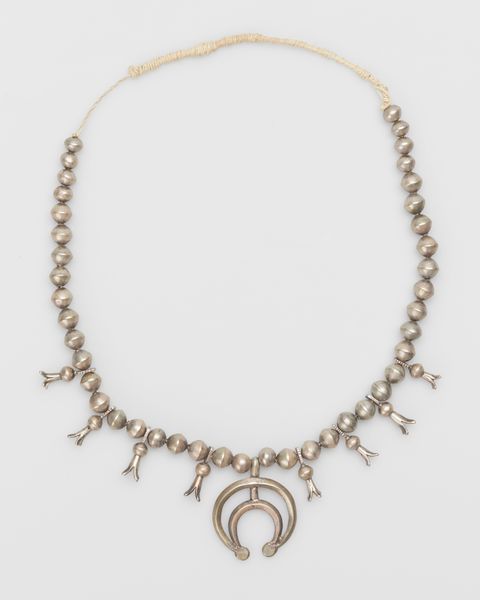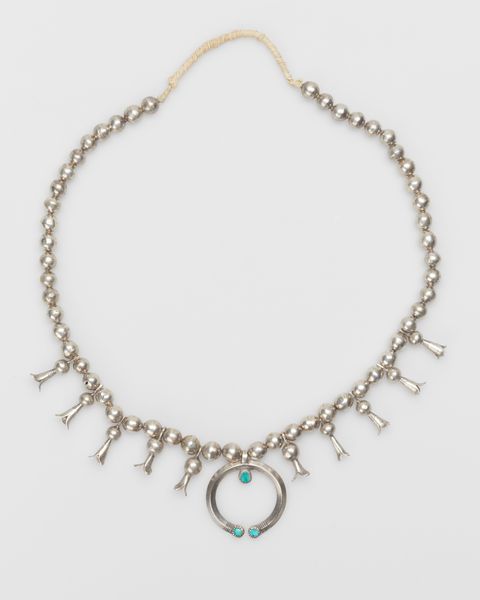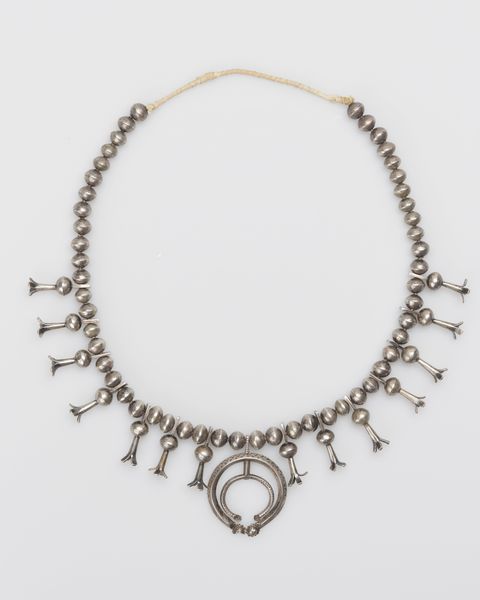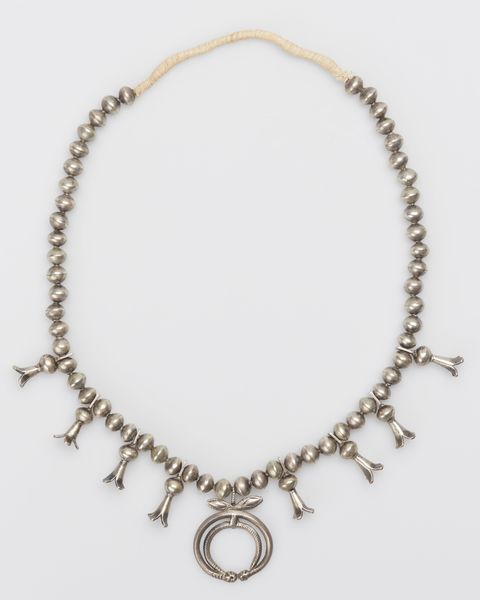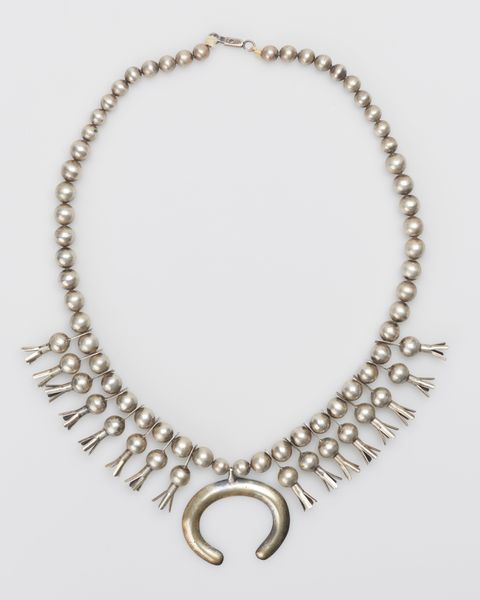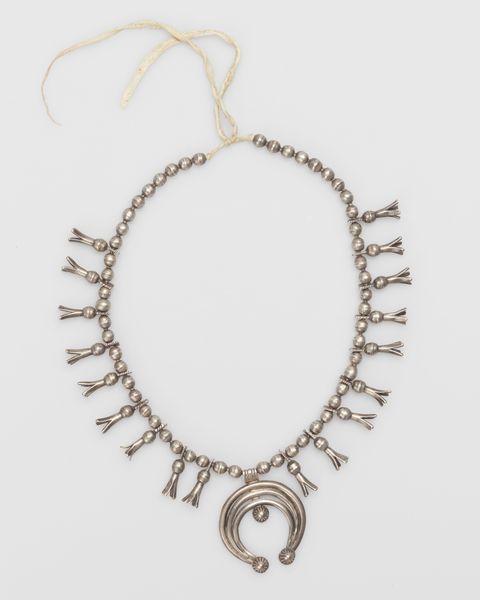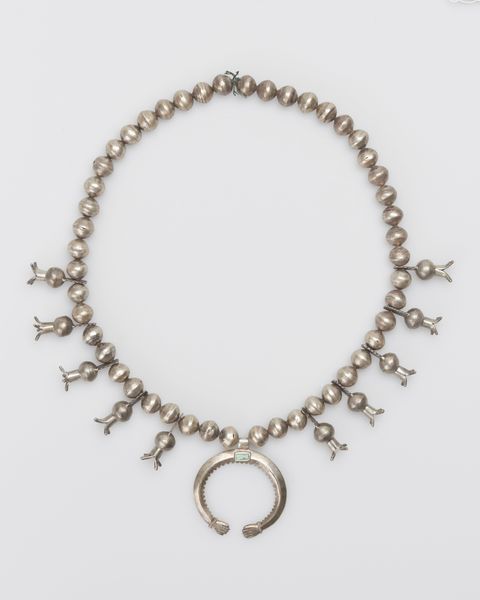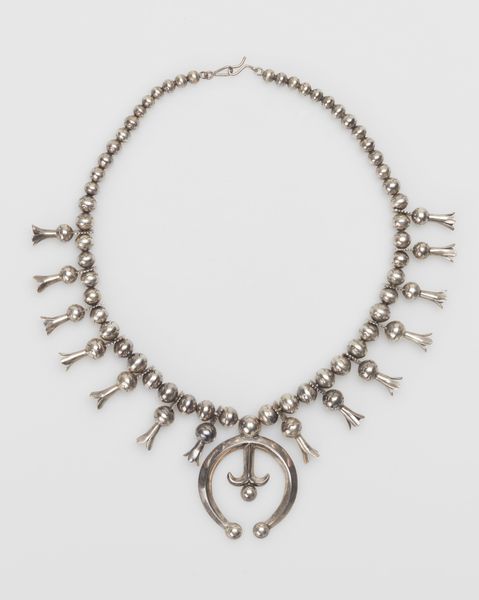
silver, metal
#
silver
#
metal
#
indigenous-americas
Copyright: Public Domain
Editor: This beautiful silver necklace, crafted by Navajo artists sometime between 1910 and 1920, really strikes me with its elegant simplicity. The composition relies so heavily on the circular forms. What stands out to you from a formal perspective? Curator: The deployment of repeating spherical and crescent forms achieves a balanced rhythm. Consider the subtle gradations in size, and the mirroring around the central pendant. Each element contributes to the overall structural integrity. Editor: I notice the smaller floral shapes connecting the beads with the larger blossoms. What can you tell me about these? Curator: Indeed, the design capitalizes on a visual language which integrates geometric abstraction and naturalistic representation. The reflective surface of the silver further enhances the interplay of light and form, inviting prolonged visual contemplation. Editor: So it’s less about cultural context and more about... form and the artist's hand? Curator: Precisely. By analyzing the work through the formalist lens, we move beyond immediate cultural readings to grasp the underlying visual mechanics. This allows us to see not just *what* is represented, but *how* it is constructed. Editor: That's so interesting. I hadn't thought about approaching Indigenous art with formalism before. It makes you think about how to challenge your first impressions, or immediate assumptions about it. Curator: Exactly! Paying close attention to the composition can be very rewarding and add much to our experience of art.
Comments
No comments
Be the first to comment and join the conversation on the ultimate creative platform.
